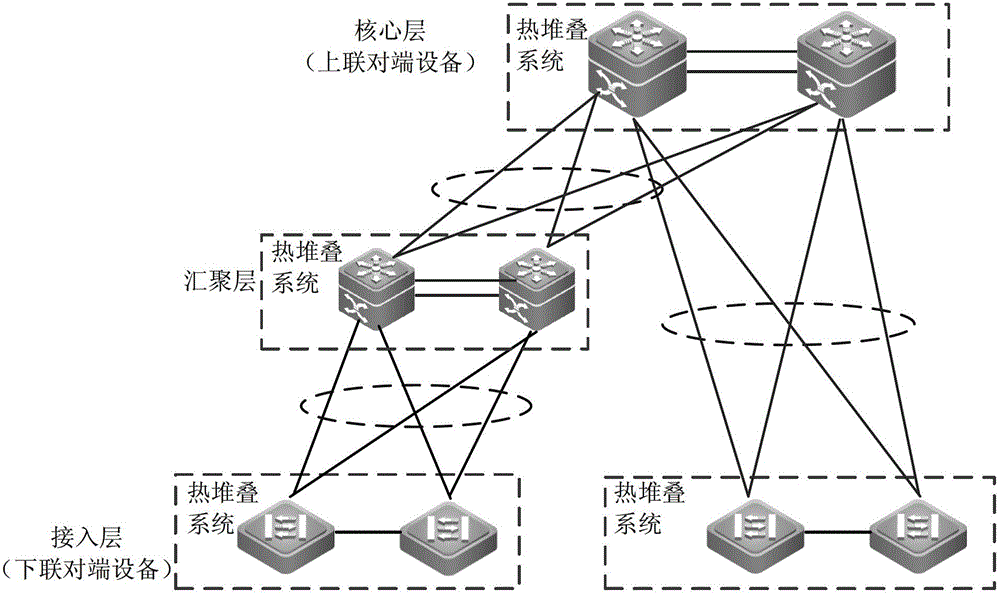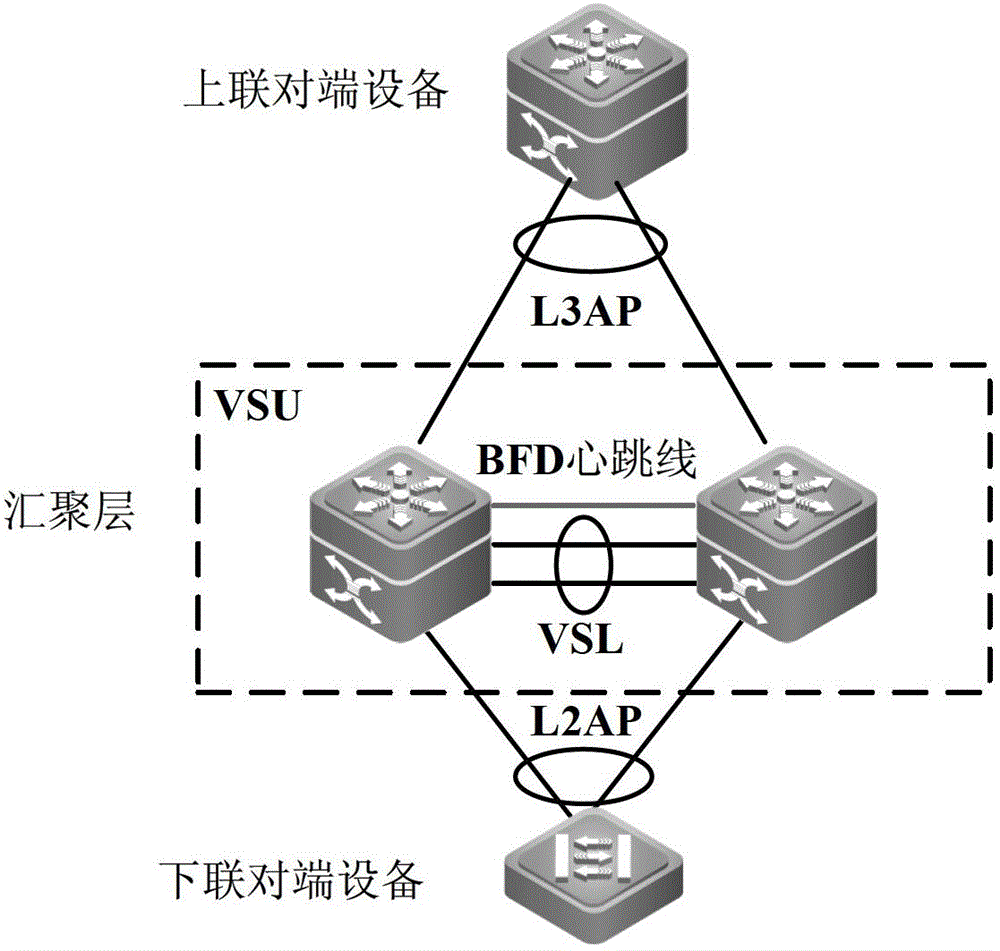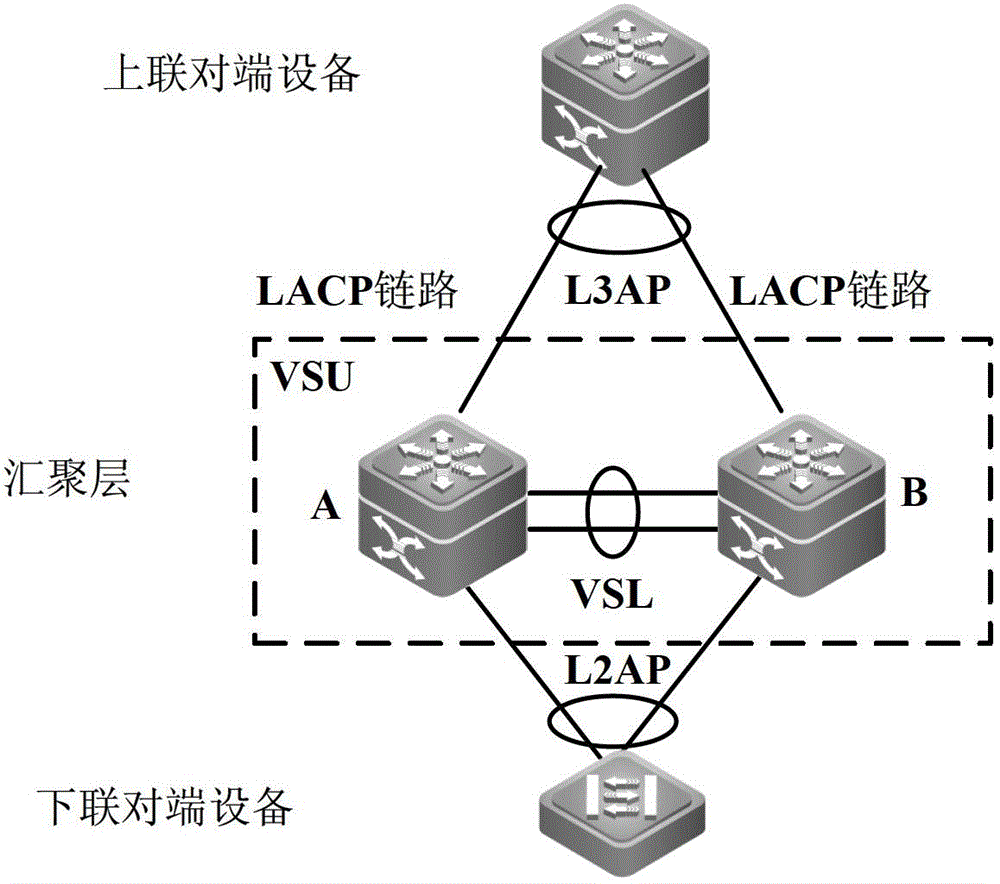Collision detection method, device and network device of dual-master device in thermal staking system
A primary device and thermal stacking technology, applied in the field of network communication, can solve problems such as insufficient network compatibility, inapplicability and non-applicability of dual-active device detection technology, and achieve the effect of meeting network compatibility requirements
- Summary
- Abstract
- Description
- Claims
- Application Information
AI Technical Summary
Problems solved by technology
Method used
Image
Examples
Embodiment 1
[0048] In order to better understand the embodiment of the present invention, in Embodiment 1, first receive the construction process of the thermal stacking system, which generally includes the following steps:
[0049] Step 1. Establish and configure the stack for the stand-alone device, including the stack domain number, device number (Switch ID), priority, device description, and stack port, etc.;
[0050] Step 2. Connect the stack ports configured by each device according to a certain topology through cables;
[0051] Step 3: The stack system performs operations such as topology collection and master device election;
[0052] After completing the above three steps, the stacking system is completed.
[0053] During implementation, in order to perform dual-active device detection after the topology split of the established stack system, it is also necessary to pre-configure detection ports. Specifically, according to the topology of the stack system, the is an edge device...
Embodiment 2
[0067] Embodiment 2 Based on Embodiment 1, a dual-active device conflict handling solution is provided. When the original active device of the hot stack system determines that there is a dual active device conflict, in order to ensure the normal operation of the network, it is necessary to conduct elections according to certain rules, keep one hot stack subsystem to continue working, and the other hot stack subsystem closes all services The port enters recovery mode to avoid network conflicts and other situations.
[0068] Specifically, such as Figure 9 As shown in , it is a schematic diagram of the election process for the primary device of the thermal stack subsystem after splitting, including the following steps:
[0069] S901. The original active device of the hot stack system sends a master election message to its peer detection port through the detection port;
[0070] Among them, the first election rule information of the original master device is carried in the host...
Embodiment 3
[0108] Such as Figure 14 As shown, it is a schematic structural diagram of a dual-active device conflict detection device in a thermal stacking system provided by an embodiment of the present invention, including:
[0109] The first receiving unit 1401 is configured to receive the LLDP packet sent by the detection port of the opposite end through the pre-configured detection port, and the LLDP packet carries the device identification of the active device of the hot stack system to which the detection port of the opposite end currently belongs ;
[0110] A judging unit 1402, configured to judge whether the device identifier carried in the LLDP message received by the receiving unit this time is the same as the device identifier carried in the last received LLDP message;
[0111] The determination unit 1403 is configured to determine that there is no dual-active conflict when the determination result of the determination unit is yes; and determine that there is a dual-active c...
PUM
 Login to View More
Login to View More Abstract
Description
Claims
Application Information
 Login to View More
Login to View More - R&D
- Intellectual Property
- Life Sciences
- Materials
- Tech Scout
- Unparalleled Data Quality
- Higher Quality Content
- 60% Fewer Hallucinations
Browse by: Latest US Patents, China's latest patents, Technical Efficacy Thesaurus, Application Domain, Technology Topic, Popular Technical Reports.
© 2025 PatSnap. All rights reserved.Legal|Privacy policy|Modern Slavery Act Transparency Statement|Sitemap|About US| Contact US: help@patsnap.com



